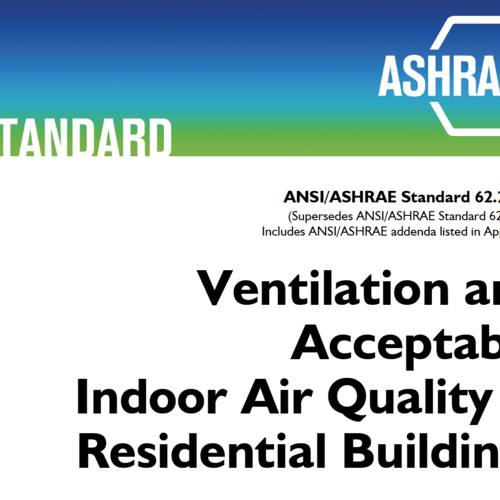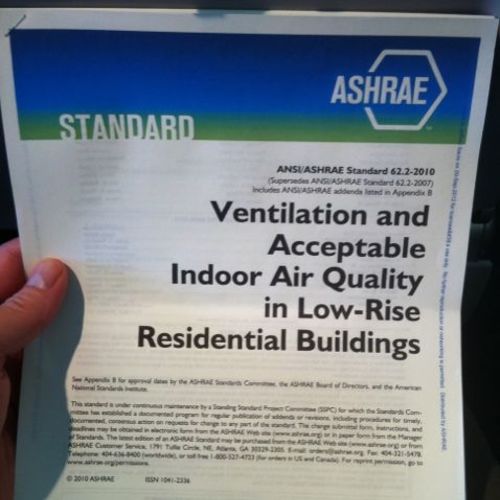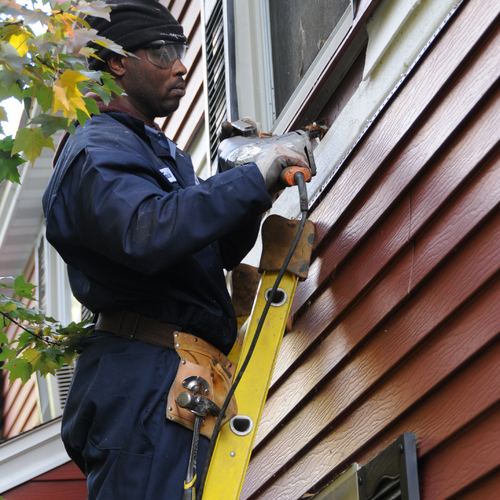
I just finished up two long days sitting in a conference room with over 25 other people reviewing green building proposals for a federal agency that must remain unnamed. Both interesting and mind-numbing, the process of reading, evaluating, grading, discussing, and writing reports was an arduous and informative process.
We saw many well written proposals for ridiculous projects and many poorly written ones for potentially viable ideas. Our work involved separating the wheat from the chaff in a group of about 65 submissions. There were several themes that regularly repeated themselves in the papers, including CO2 detectors to assist in ventilation systems, advanced window technologies, reflective roofing, and unique air filtration devices.
Before I get into some of the interesting and amusing content of the proposals, I feel the need to mention the incredible group of experts assembled to undertake the work. The reviewers included engineers, consultants, architects, and researchers, along with experts in air quality, building management, IT, green building, and other disciplines. I suppose there were a few building scientists in the group, but no one described themselves as such.
I frequently find myself humbled when I sit down with others how have almost limitless depths of knowledge in specific subjects, particularly as I see myself as a generalist with a very broad but relatively shallow knowledge base. Coming from a contracting background, where being a “jack of all trades but master of none” is both a common and valuable trait, I am often out of my depth with roomfuls of subject experts.
I bet you never knew I was a rapporteur
Each of us was sent a copy of all proposals in advance of the meeting, with an assignment to prepare a written evaluation of between 7 and 8 of them and briefly read through all the others. Each proposal had three primary reviewers, one of whom was listed as the “rapporteur” (literally French for “reporter”) – the person responsible for assembling the reviewers’ consensus and preparing the final written report.
I didn’t know that using fancy French words was a hallmark of government programs. Didn’t they rename French fries in the Congressional cafeteria for a while?
Lots of talk about demand-controlled ventilation
One subject of multiple proposals was a new or updated type of CO2 detector designed to be used in demand-controlled building ventilation. Now, I’ve had lots of discussions and arguments about, listened to many presentations, and read books and articles on building ventilation, but somehow I missed this particular phrase – “demand-controlled ventilation” – before. In its simplest form, this can be provided by something like a humidity sensor in a bathroom, but for whole-building ventilation, particularly for residential projects, it is pretty rare.
One of the attendees pointed out in a side discussion that he manages his house ventilation based on hot water use – when his college age children are home and use more hot water, it signals his ventilation system to move to a higher exchange rate. Not exactly orthodox, but interesting nonetheless.
It does appear that there is a lot of thought (and money) going into using CO2 sensors to manage building ventilation these days. While I like the concept, it falls into the category of possibly being too complicated to work consistently and effectively. It will be interesting to see how these experiments evolve into real-world products.
Evaluation haiku
Perhaps the most entertaining part of the entire meeting came towards the end, when each rapporteur had to provide a brief review of one of the proposals that had not made the “competitive” cut, just to make sure that we weren’t getting rid of anything that was worthy of consideration. After being reminded by the meeting organizer to keep our comments as short as possible, the gentleman next to me provided his report in haiku as follows:
This one not so good,
Has to do with mold, I think,
Was not understood.
Both amusing and concise, it was one of the best reviews of the entire meeting.
My take on the entire process
Overall, I found the evaluation process well organized, if somewhat arbitrary. Individual reviewers were assigned proposals based on their self-reported expertise and the expected content based on the title.
In most cases the matches were reasonable, but some of us were reviewing things that were far beyond our ability to understand them. As each proposal was discussed by the entire group, these gaps were easily filled in, and we ultimately arrived at, I believe, reasonable evaluations of each proposal.
As we are not the final arbiters of the process, I don’t believe I will ever find directly out which proposals were approved, but it will be interesting to see if any of them eventually appear in the marketplace. I enjoyed the opportunity to spend time with a diverse group of very smart people, hear their opinions, and learn new things from them.
Weekly Newsletter
Get building science and energy efficiency advice, plus special offers, in your inbox.















One Comment
CO2 controlled ventilation
There was a piece a while back by a guy who ran a CO2 monitor during his family thanksgiving feast and postulated that it wasn't the L-tryptophan in turkey that made his family sleepy but the alarmingly high CO2 level of a house full of people and an active kitchen.
I like linking my ventilation system to bathroom visits, though in rural NC it's viewed as considerate for male beer drinkers to use the trees rather than over burden the septic tank. Can we get a govirnmint grant to study the global warming implications of malt beverage derived tree irrigation?
Log in or create an account to post a comment.
Sign up Log in